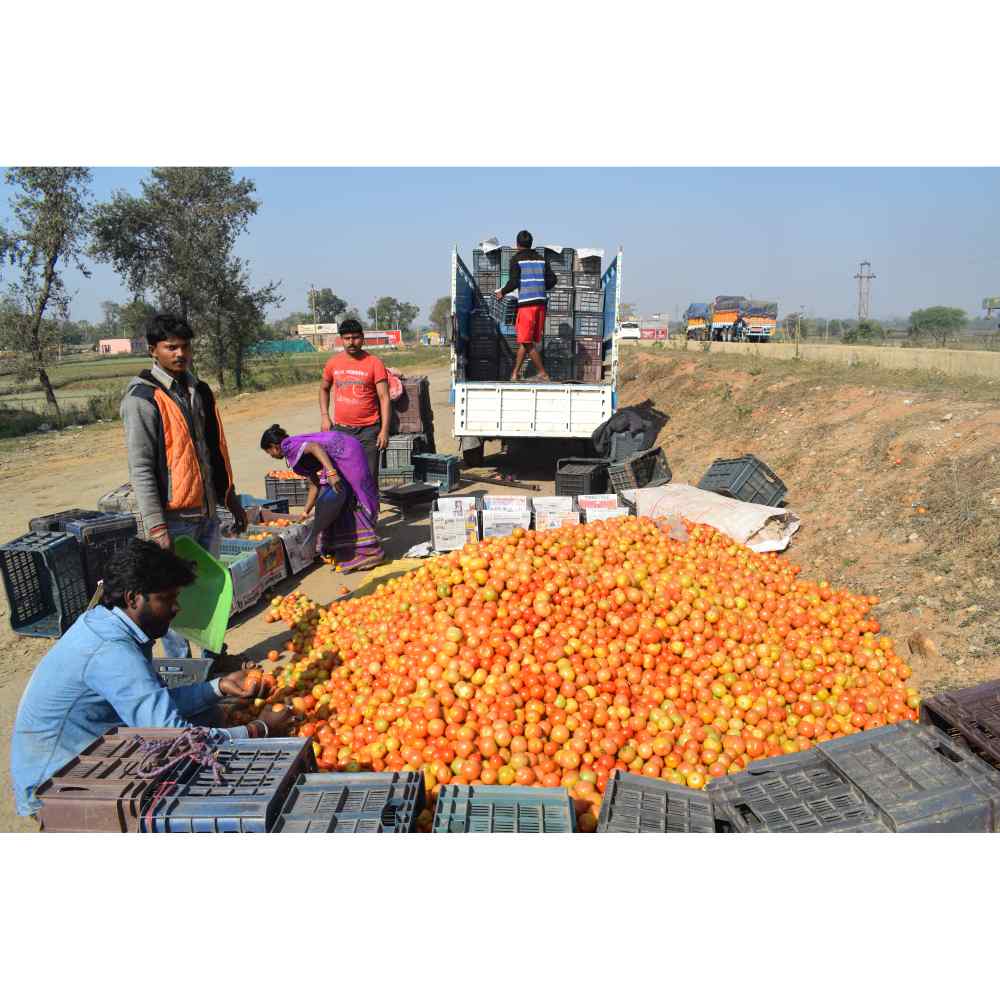'One India, One Agriculture Market' ordinance conceptually is good for the farmer. The farmer can now have hassle free movement without an entry barrier. Widening the definition of the market would favor farm-gate pricing, states Mihir Mohanta, General Manager – Supply Chain (Mother Dairy).
We step into our neighborhood “Sabjiwala” every day expecting to get the same tomato. But he is not the grower, he is not even aware, where were these grown. For instance, during a year, Delhi consumer gets tomato from Ahmadabad, Rajasthan, Sonipat, Sahabad/Ladwa, Sundarnager/ Solan, Uttarkashi, Kolar, Ratlam, Nashik or Barpeta. Almost every alternate month there is a shift. The fruits and vegetable supply chains are created with full understanding that these would be broken.
Each time a supply line is created, there is a cost. The more the supply lines, the more unstable are the supplies. Consequently, the prices swing from Rs 2/- to 80/- and the vice-versa. This is a repeat phenomenon which occurs every year. As the monsoon pours in, the tomato prices heat up.
The supply chain can become stable if we can extend the “window of availability” from an area. Stretching the window is possible with improvised seed, which are climate adaptable with technology enabled packages of practice. Such adaptation can transform the seasonal nature of crop to annual. Such an adoption is seen in and around Raipur. Here the standing crops are in the field for 9 to 10 months and are in active fruiting stage for 4 to 5 months. Farmer’s risk reduces with better, averaging of prices in a long selling window. It improves his total per acre return.
Another assured supply system is to grow intensively under controlled environment. The parameters such as air, water and light are managed through algorithms. These can reduce the crop duration to half and increase productivity by 10X. These can be live factories with precise nutrient content, assured safety, and reliable supplies. Since these uses’ energy, it comes at a cost. From a market perspective, such products need differentiation to command right value. Many growers fail to garner the right value, for they do not communicate and convince consumers. On the other hand, for a typical Indian consumer, price is the prime criteria of decision making. If consumers appreciate quality and are willing to pay a little more, farmers can stabilize this supply system.
Among the market channels, the traditional supply chain still is the sole predominant channel with more than 97% share. A farmer suffers because of his low scale, improper post-harvest practices, poor market information and poor market access. A high-tech farmer who grows in controlled environment also suffers, as he tries to push his produce through the same traditional mandi channel, which does not recognise or differentiate it as separate product. Adat (middle-man), a dominant player in the APMC mandi system, has better market information, is financially strong and can manipulate many of the practices into his advantage. The supply chain inefficiencies pile up along the chain ultimately affecting the farmer. As a result of this, the farmer’s share in consumer rupee is as low as 20-30%. For a country like India, it needs to be around 60-65%.
Agricultural reforms
'One India, One Agriculture Market' ordinance conceptually is good for the farmer. The farmer can now have hassle free movement without an entry barrier. Widening the definition of the market would favour farm-gate pricing. However, market unification would happen on two fronts, virtual integration, and physical integration. For fruits and vegetables, virtual and physical transactions take place simultaneously as the products are perishable. Therefore, the APMC’s gateways will continue their dominance for physical movement, until alternate channels are created. So, the next big thing to support the ordinance is to create alternate market channels that would compete with APMC’s. They could co-exist and compete for their survival, which will bring efficiency. The supply chain would continue to be fragile until around 20% of the market share is attained by the organized players.
The ordinance has provided a framework, but the alternate market and marketing infrastructure is to be built brick-by-brick. The extent of farmers’ stakes in rebuilding alternate channels would be a critical factor in determining stability the future supply system. Let us visualize for a fair, transparent and equitable market system, which would support “doubling the farmers’ income”.

Categories

Magazine Editions






















